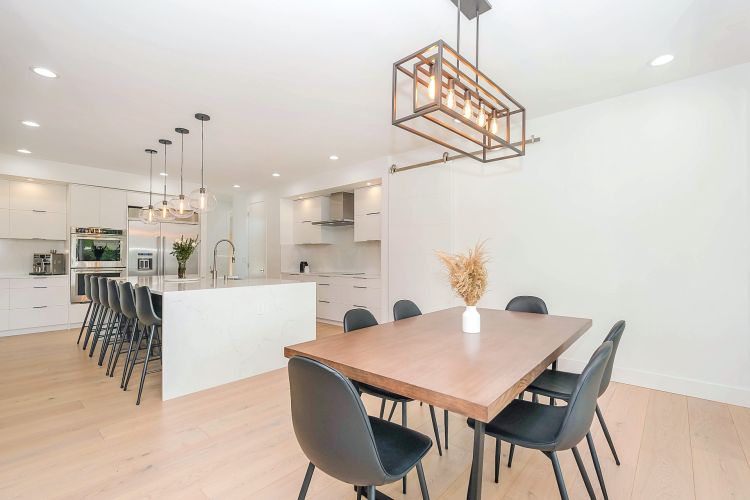
Why Many Indian Buyers Struggle When Importing Furniture from China and How to Avoid It
Importing furniture from China and dining tables seems like a great idea affordable prices, vast designs, and access to modern trends. But for many importers, the reality can be different. What should be a smooth, cost-effective process often turns into a frustrating experience filled with delays, confusion, and unexpected costs.
If you’ve been there or want to avoid being there this guide highlights the most common problems buyers face when importing kitchen furniture from china and dining furniture from China, and how smart sourcing practices can save your time, money, and peace of mind.
1. “The Furniture Looked Nothing Like What I Ordered.”
One of the biggest concerns? The product doesn’t match the design you approved. Maybe the size is off, the color feels different, or the finish just isn’t right.
This usually happens when there’s a disconnect between expectations and production. Vague specifications, unclear communication, or lack of sample verification often lead to these issues.
Tip: Having someone experienced handle product specs, communicate with suppliers, and get samples verified on your behalf can bridge this gap. It’s often the difference between disappointment and satisfaction.
2. “The Quality Was Below Standard.”
Looks can be deceiving especially when shopping online. What appears polished in a catalog might arrive with weak joints, poor hardware, or substandard finishes.
Quality issues are rarely accidental. They often stem from skipping proper inspections, trusting unverified manufacturers, or focusing solely on price.
Tip: Having eyes on the ground, especially someone who understands what quality looks like, is essential. Many importers work with teams who know what to check, when to check, and how to avoid costly errors.
3. “I Thought the Price Was Final Then the Extra Charges Came In.”
Freight fees, port handling charges, customs duties, inland transport… they add up quickly. What began as a budget-friendly deal suddenly becomes more expensive than local purchases.
This often happens when buyers aren’t fully aware of Incoterms (like EXW, FOB, or CIF) or forget to factor in clearance, warehousing, or last-mile delivery.
Tip: It’s wise to have your cost breakdown reviewed by someone familiar with international freight and customs processes. This ensures there are no surprises at the last minute.
4. “The Shipment Was Delayed for Weeks.”
Unexpected factory closures, missed production deadlines, or documentation errors can easily delay your shipment. And when you’re depending on delivery for a renovation or retail launch, these delays become expensive.
Tip: Many successful importers rely on sourcing partners who maintain regular factory follow-ups and manage logistics to avoid costly downtime.
5. “Customs Held My Shipment and I Didn’t Know Why.”
Improper classification, incorrect paperwork, or missing certificates can result in customs clearance issues. In worst-case scenarios, shipments get stuck, incur heavy penalties, or even get returned.
Tip: Accurate documentation and local compliance knowledge are critical. That’s why many importers prefer working with experienced trade professionals who understand import regulations inside and out.
6. “Missing Parts, No Assembly Guide, and Total Confusion.”
It’s frustrating to receive flat-packed furniture with missing screws, mislabeled parts, or zero instructions. Assembling becomes a guessing game, and sometimes, professional help is needed just to figure things out.
Tip: Working with someone who verifies packing, labeling, and includes instruction checks before the shipment leaves the factory can make all the difference.
7. “I Didn’t Know Who to Trust or Where to Start.”
With hundreds of suppliers offering similar products, it’s hard to know who’s genuine and who’s not. Many buyers spend weeks researching, only to feel more overwhelmed.
Tip: Getting support from someone who already knows the market, has vetted connections, and can simplify the supplier search can save you from costly mistakes.
A Smarter Way to Import
If any of these situations sound familiar, you’re not alone. Importing furniture from China, especially kitchen cabinets and dining sets, is more than just finding a good product it’s about navigating a complex process involving design accuracy, quality control, logistics, and compliance.
Whether you’re sourcing for your home, a renovation project, or your business, having a reliable team by your side one that knows how the Chinese furniture market works can help you avoid all the headaches and make the process seamless.
If you’re looking for a simpler, safer, and smarter way to import kitchen furniture and dining tables from China, consider reaching out to us as we’ve helped others do it right.
Need help getting started or unsure what to expect from the import process?
There’s guidance available that can make things easier from supplier selection and factory audits to shipping, customs, and final delivery at We Do Import.











Leave a Reply